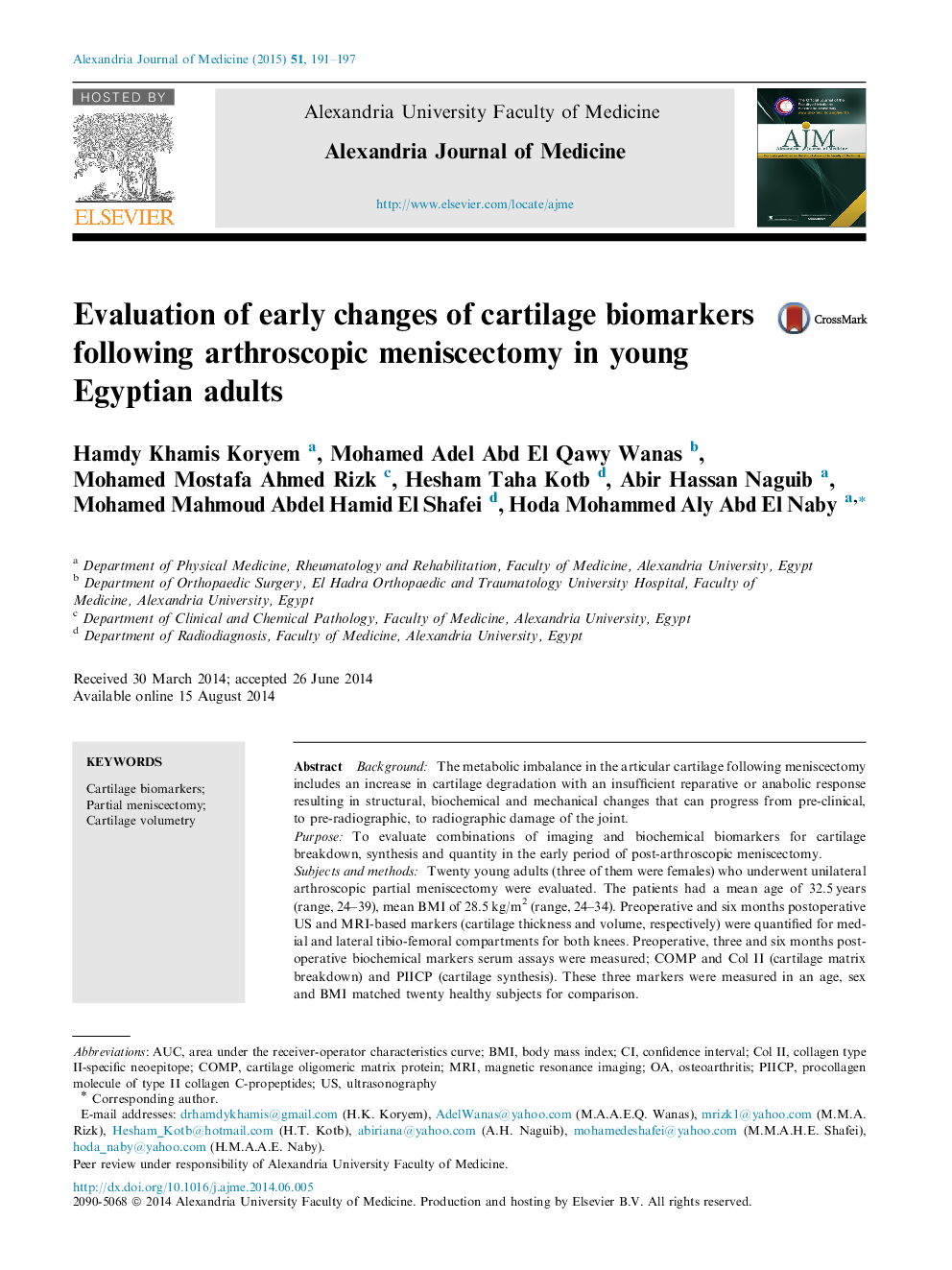| Article ID | Journal | Published Year | Pages | File Type |
|---|---|---|---|---|
| 3431546 | Alexandria Journal of Medicine | 2015 | 7 Pages |
BackgroundThe metabolic imbalance in the articular cartilage following meniscectomy includes an increase in cartilage degradation with an insufficient reparative or anabolic response resulting in structural, biochemical and mechanical changes that can progress from pre-clinical, to pre-radiographic, to radiographic damage of the joint.PurposeTo evaluate combinations of imaging and biochemical biomarkers for cartilage breakdown, synthesis and quantity in the early period of post-arthroscopic meniscectomy.Subjects and methodsTwenty young adults (three of them were females) who underwent unilateral arthroscopic partial meniscectomy were evaluated. The patients had a mean age of 32.5 years (range, 24–39), mean BMI of 28.5 kg/m2 (range, 24–34). Preoperative and six months postoperative US and MRI-based markers (cartilage thickness and volume, respectively) were quantified for medial and lateral tibio-femoral compartments for both knees. Preoperative, three and six months postoperative biochemical markers serum assays were measured; COMP and Col II (cartilage matrix breakdown) and PIICP (cartilage synthesis). These three markers were measured in an age, sex and BMI matched twenty healthy subjects for comparison.ResultsThe meniscectomized knees had significantly lower total knee cartilage volume, P < 0.05 but non-significant mean thickness than the intact contralateral knees. Among the individual biochemical markers, PIICP had the highest significant diagnostic accuracy quantified as the area under the receiver-operator characteristics curve (AUC) of 0.75 (95% confidence interval: 0.509–0.912) higher than all others, P < 0.05 to distinguish subjects with progressive cartilage loss from non-progressors. Diagnostically, ratio of COMP and Col II to PIICP scored AUC of 0.90 (0.69–0.98, higher than PIICP: P = 0.0001). For prediction of cartilage loss, none of the individual markers could be used.ConclusionCartilage volume loss by MRI combined with changes in cartilage matrix turnover detected by molecular biomarkers may reflect the initial changes associated with cartilage degeneration that account for early OA.
